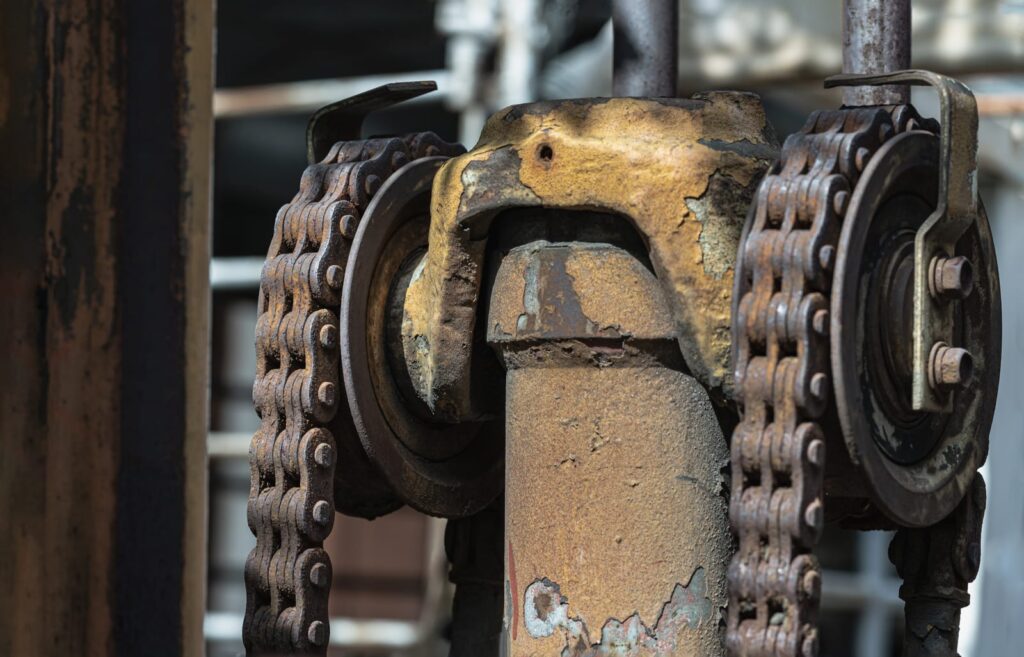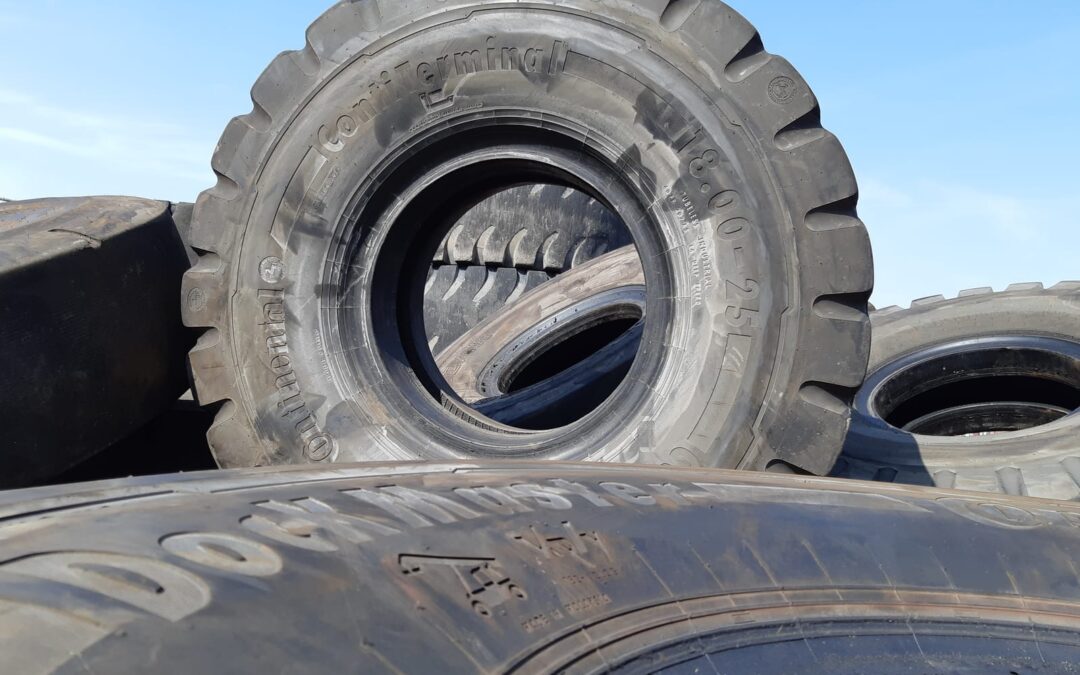Your forklift tires are the critical connection between your equipment and the ground. Yet many operators overlook this essential component until a problem arises. Understanding forklift tire maintenance can mean the difference between smooth operations and costly downtime.
At JTS Forklift Service, we’ve seen firsthand how proper equipment care impacts everything from safety to productivity. With over 30 years of combined experience serving Utah businesses, our team understands that educated operators make more informed decisions about their equipment. This comprehensive guide will help you understand tire types, recognize wear patterns, and implement effective maintenance strategies.
Whether you’re managing a single forklift or an entire fleet, the information ahead will help you maximize tire life, enhance safety, and reduce operational costs.
Understanding Forklift Tire Types
Choosing the right tire type for your application is fundamental to performance and longevity. The two primary categories each serve specific purposes and environments.
Cushion Tires: Indoor Champions
Cushion tires consist of solid rubber pressed onto a metal band. This design features a lower profile, bringing the operator closer to the ground and improving stability and maneuverability in tight spaces.
Advantages of cushion tires include:
- Superior maneuverability in narrow aisles
- Lower initial cost compared to pneumatic options
- Excellent stability for indoor applications
- Reduced maintenance requirements
- Better fuel efficiency due to lower rolling resistance
Limitations to consider:
- Limited outdoor capability on rough surfaces
- Reduced operator comfort due to less shock absorption
- Shorter lifespan on abrasive surfaces
- Poor performance on uneven terrain
Cushion tires excel in warehouses, manufacturing facilities, and smooth concrete surfaces. They’re ideal for operations requiring precise positioning and frequent direction changes.
Pneumatic Tires: Outdoor Performers
Pneumatic tires use air-filled chambers, similar to automotive tires. This design provides superior shock absorption and traction on various surfaces.
Benefits of pneumatic tires:
- Enhanced operator comfort through shock absorption
- Better traction on outdoor surfaces
- Longer lifespan on rough terrain
- Superior performance on gravel, dirt, and uneven surfaces
- Higher load capacity for heavy-duty applications
Potential drawbacks:
- Higher initial investment
- Risk of punctures and air leaks
- More complex maintenance requirements
- Increased rolling resistance affecting fuel economy
Pneumatic tires are essential for outdoor operations, construction sites, and facilities with rough or uneven surfaces. They’re particularly valuable when forklifts must transition between indoor and outdoor environments.

Recognizing Critical Wear Signs
Early detection of tire wear prevents safety hazards and extends the equipment’s lifespan. Regular inspection should focus on three key areas.
Tread Wear Assessment
Tread depth has a direct impact on traction and stability. For cushion tires, measure from the bottom of the tread groove to the surface of the tire. Replace when the tread depth reaches 1/8 inch or less.
Key indicators of excessive tread wear:
- Smooth, slick appearance on contact surfaces
- Visible wear indicators reaching the surface
- Reduced traction during normal operations
- Increased stopping distances
Monitor tread wear patterns across the entire tire surface. Even wear indicates proper alignment and loading. Uneven patterns suggest underlying mechanical issues requiring attention.
Sidewall Damage Detection
Sidewall integrity is crucial for tire safety. Inspect sidewalls for cuts, cracks, bulges, or embedded objects during each shift.
Common sidewall problems include:
- Cuts from sharp objects or debris
- Cracks from age, heat, or chemical exposure
- Bulges indicating internal structural damage
- Punctures that may lead to air loss
Any sidewall damage compromises structural integrity and creates safety risks. Replace damaged tires immediately rather than attempting repairs.
Uneven Wear Pattern Analysis
Uneven wear patterns reveal valuable information about your forklift’s condition and operating practices.
Typical wear patterns and their causes:
- Center wear: Overinflation in pneumatic tires
- Edge wear: Underinflation or overloading
- One-sided wear: Misalignment or suspension problems
- Cupping: Worn suspension components or imbalanced loads
Addressing the root cause of uneven wear extends tire life and improves overall equipment performance.
Safety Risks of Worn Tires
Worn tires create serious safety hazards that extend beyond the immediate operator. Understanding these risks emphasizes the importance of proactive forklift tire maintenance.
Loss of Stability
Worn tires reduce the contact patch between your forklift and the ground. This decreased contact area compromises stability, especially when carrying loads at height. The risk intensifies during turns, where lateral forces can overcome reduced traction.
Stability issues manifest as:
- Increased sway during load handling
- Reduced cornering ability
- Higher risk of tip-overs
- Difficulty maintaining straight-line travel
Reduced Braking Efficiency
Effective braking depends on tire-to-ground friction. Worn tires extend stopping distances and reduce control during emergencies. This is particularly dangerous in busy warehouse environments where quick stops are often necessary.
Braking problems include:
- Longer stopping distances
- Reduced ability to stop on inclines
- Increased risk of load shifting during braking
- Compromised emergency response capability
Increased Accident Risk
The combination of reduced stability and braking performance significantly increases the probability of accidents. Worn tires contribute to property damage, injury risks, and operational disruptions.
Accident risks encompass:
- Collisions with personnel or equipment
- Load drops due to instability
- Structural damage from loss of control
- Regulatory violations and liability issues
When to Rotate or Replace Tires
Effective tire management involves both rotation and replacement strategies. Understanding the factors that influence tire life helps optimize maintenance schedules.
Factors Influencing Tire Life
Several variables impact how long your tires will last:
Operating environment plays a crucial role:
- Smooth surfaces extend tire life
- Abrasive surfaces accelerate wear
- Chemical exposure can cause deterioration
- Temperature extremes affect rubber compounds
Usage patterns significantly affect longevity:
- Heavy loads increase wear rates
- Frequent stops and starts generate heat
- High-speed operation accelerates tread wear
- Aggressive turning damages sidewalls
Maintenance practices directly impact lifespan:
- Proper inflation maintains tire shape
- Regular cleaning prevents chemical damage
- Prompt debris removal prevents cuts
- Correct loading prevents overloading
Rotation Best Practices
Tire rotation distributes wear evenly across all positions. This practice extends overall tire life and maintains consistent performance.
Effective rotation strategies:
- Rotate tires every 200-300 operating hours
- Move front tires to rear positions
- Cross-rotate to compensate for wear patterns
- Document rotation dates and patterns
Benefits of regular rotation:
- Extended overall tire life
- Consistent traction across all positions
- Reduced replacement costs
- Improved safety through even wear
Replacement Guidelines
Replace tires when they reach predetermined wear limits or show safety-compromising damage. Establish clear criteria to ensure consistent decision-making.
Replacement indicators:
- Tread depth reaches minimum specifications
- Sidewall damage compromises integrity
- Uneven wear patterns cannot be corrected
- Age exceeds manufacturer recommendations
Replacement strategies:
- Replace tires in pairs to maintain balance
- Consider full set replacement for optimal performance
- Keep detailed records of replacement dates
- Plan replacements during scheduled maintenance

The Impact of Different Surfaces
Operating surfaces have a significant impact on tire wear patterns and longevity. Understanding these relationships helps optimize tire selection and maintenance practices.
Concrete vs. Asphalt Performance
Concrete surfaces offer several advantages:
- Smooth texture reduces tread wear
- Consistent surface minimizes stress concentrations
- Chemical resistance prevents degradation
- Predictable wear patterns simplify maintenance
Asphalt surfaces present different challenges:
- The softer surface may cause irregular wear
- Temperature variations affect tire performance
- Oil and chemical absorption can cause swelling
- Aggregate exposure increases abrasion
Impact of Debris and Obstacles
Foreign objects on operating surfaces create significant tire hazards. Debris can cause immediate damage or accelerate long-term wear.
Common debris hazards:
- Metal fragments cause cuts and punctures
- Chemicals create compound deterioration
- Uneven surfaces generate stress concentrations
- Sharp objects penetrate tire materials
Protective measures:
- Implement regular surface cleaning
- Remove debris promptly
- Use appropriate tire compounds for conditions
- Train operators to avoid hazards when possible
Minimizing Wear Strategies
Proactive surface management reduces tire wear and extends service life.
Effective reduction techniques:
- Maintain smooth, clean operating surfaces
- Address surface defects promptly
- Use proper tire compounds for conditions
- Implement operator training programs
Operational adjustments:
- Reduce speeds on rough surfaces
- Avoid sharp turns on abrasive materials
- Plan routes to minimize exposure to hazards
- Schedule maintenance during off-peak hours
Identifying Misalignment Issues
Proper wheel alignment is crucial for even tire wear and maximum performance. Misalignment causes uneven stress distribution that speeds up equipment failure and lowers safety.
Common Misalignment Symptoms
Visual indicators of misalignment:
- Uneven tread wear across tire width
- Vehicle pulling to one side during travel
- Steering wheel off-center during straight travel
- Premature tire wear on specific positions
Performance symptoms:
- Increased fuel consumption
- Reduced stability during load handling
- Excessive tire heat generation
- Unusual vibration or noise
The Impact of Alignment
Misalignment forces tires to operate at incorrect angles, creating uneven contact patches and accelerated wear.
Specific wear patterns:
- Toe misalignment causes a feathered effect
- Camber problems create one-sided wear
- Caster issues affect straight-line stability
- Multiple alignment problems create complex patterns
Correction Solutions
Address alignment issues promptly to prevent further tire damage and ensure safe operation.
Professional alignment services:
- Comprehensive suspension inspection
- Precision alignment adjustments
- Verification of specifications
- Documentation of corrections made
Preventive measures:
- Regular alignment checks
- Prompt attention to impact damage
- Proper loading practices
- Operator training on gentle handling
Maximizing Your Forklift’s Potential
Proper forklift tire maintenance has a direct impact on your bottom line by reducing downtime, improving safety, and extending equipment life. Investing in high-quality tires and regular maintenance enhances productivity and reduces costs. Routine inspections, rotations, and prompt action on signs of wear ensure equipment runs efficiently. Remember, tires are a key safety component, not just a consumable, and their condition affects all aspects of material handling.
At JTS Forklift Service, we understand the critical role that tires play in the overall performance of your equipment. That’s why we offer expert forklift tire inspections, replacements, and maintenance to keep your fleet running safely and efficiently. Our experienced team is ready to help you minimize downtime and ensure every forklift meets the highest safety and performance standards.
Contact us today to schedule a service or learn more about how our customized tire solutions can keep your operations moving forward with confidence.
GET IN TOUCH WITH US TODAY
